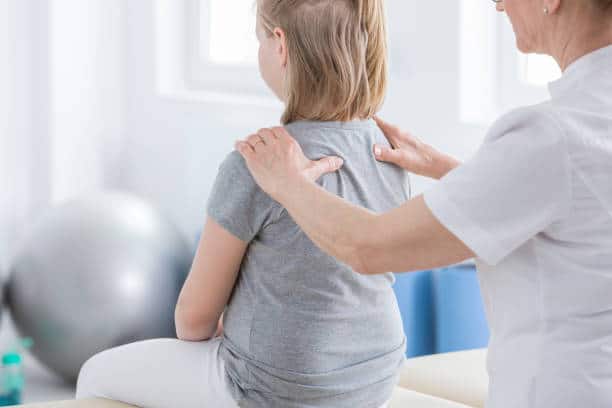Scoliosis is medical condition defined as a type of structural change to the body where there is an abnormal lateral curvature of the spine. There are multiple different types of scoliosis, and each type is named based on how and when in life it develops. These types include congenital scoliosis (when scoliosis has been present from birth due to birth defects such as spina bifida), Neuromuscular scoliosis (when the curved spine is caused by abnormal muscle tone or neurological communication), degenerative scoliosis (when the abnormal sideways curvature of the spine is caused by deterioration of the bones themselves), adolescent idiopathic scoliosis (when the scoliosis begins during puberty and the physical growth that occurs during that period), and idiopathic scoliosis (a type of scoliosis where the reason for the curved spine us unknown).
What problems can scoliosis cause?
Scoliosis can affect problems throughout the body. The lateral curvature physically affects the spine itself, causing it to have to compensate in other ways to make up the difference, and scoliosis itself can become a degenerative condition if not treated. In particularly severe cases, the abnormal curvature can also cause chronic back pain, radiating pain down the legs due to nerve compression, as well as affect the central nervous system and it’s ability to communicate with the body. The spine curves also cause the same curves in the spinal cord, which can affect the flow of cerebrospinal fluid which affects the nervous system’s ability to send the neurologic signals to the entire body. This can result in neuromuscular conditions and make the body more prone to muscular dystrophy. In congenital scoliosis, when the curves of the spine have been present from birth, this birth defect can also contribute and make symptoms of cerebral palsy worse.

How does scoliosis affect the entire body?
Scoliosis in any part of the body can affect the functioning of the internal organs. Although severe scoliosis will have more of an effect, even mild scoliosis has an impact on the body. Scoliosis in the cervical spine, the neck, can affect the body’s ability to communicate with the thyroid gland and also contribute to cervicogenic and tension headaches. Thoracic scoliosis, a curve of the spine in the back of the rib cage can affect the functioning of the entire body and can cause more severe symptoms such as breathing problems due to the compression on the rib cage and lungs. Lumbar scoliosis, a curve of the spine in the low back can affect the functioning of the digestive systems and cause such symptoms as acid reflux and irritable bowel syndrome. Any spinal curvature can cause people to experience pain.
Childhood scoliosis is important to treat early, because if left untreated, it can become a progressive condition as the body continues to grow. If a child grows with an abnormal spinal curvature, it can impact how the spine reaches skeletal maturity and the spine and growth plates may not fuse properly. It is important for parents with a family history of scoliosis, either congenital scoliosis, adolescent idiopathic scoliosis, or degenerative scoliosis to make sure to monitor with their doctor their child’s development.

Can scoliosis affect your body shape?
Regardless of the type, scoliosis affects the body in multiple ways. A laterally curved spine puts abnormal pressure on both the bones and muscles of the spine, increasing tension and causing chronic pain. It can cause the body itself to be held in an abnormal twisting position, causing uneven shoulders and uneven hips which can affect body image perception in adults and adolescents which an have a negative impact on mental health. And due to the scoliosis, the body also has to compensate for the lateral curvature of the spine in other ways, putting increased stress throughout the body even causing uneven leg lengths which can affect gait.
Scoliosis can often be seen visually, and a test called the Adam’s forward bend test is a way to discern if scoliosis is functional or structural. The person would be asked to bend forward and visually, if the curve stays the same while bent, this indicates that the scoliosis is structural. If the curve goes away when the person bends forward, this indicates that the curvature of the spine is due to tension of the connective tissues or muscles, pulling on the spine’s alignment.
Scoliosis is most often diagnosed through x-rays. A cobb angle measurement will be taken off of the image itself, and based on the degree of the cobb angle, scoliosis can be diagnosed. Treating scoliosis is different based on the type of scoliosis at work. Treatment options for scoliosis also vary based on the age of the patient, but treatment can include corrective surgery at a younger age (although surgical treatment tends to be the last pursuit), physical therapy to treat neuromuscular scoliosis, and bracing to prevent further deterioration while children grow. In adulthood, scoliosis treatment can include chiropractic care which helps support the spine, reduce pain, and improve alignment.

Recent Comments